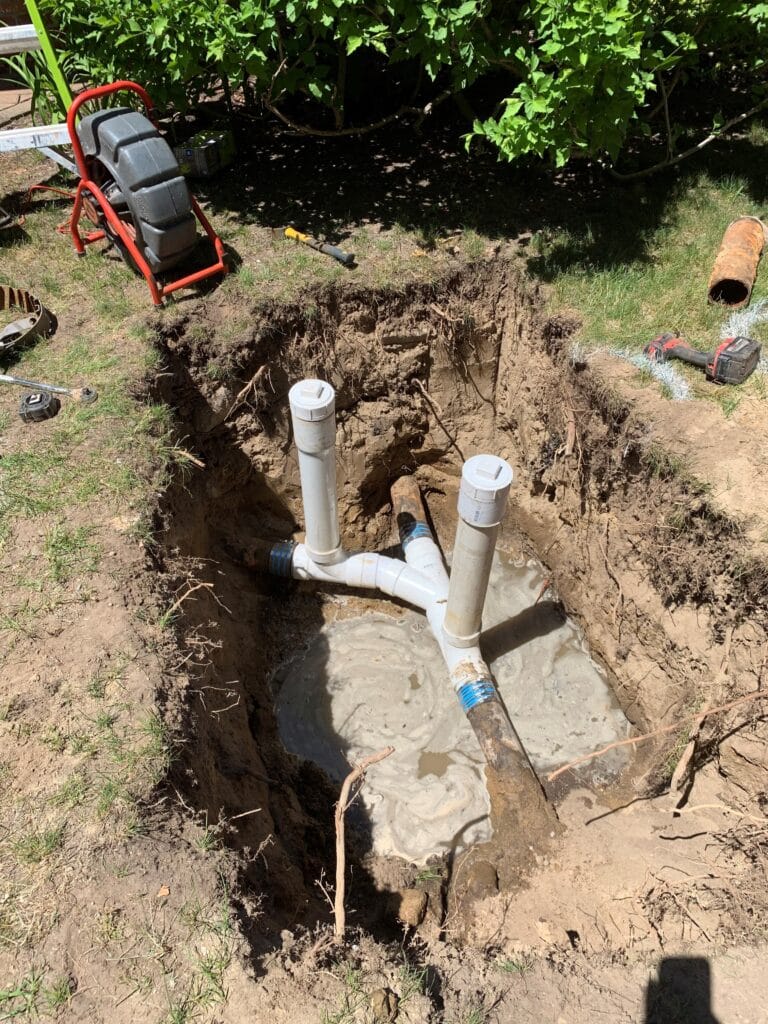Tree roots are one of the most common causes of drain blockages, leading to costly repairs and plumbing issues. Understanding how tree roots infiltrate pipes and learning the best ways to prevent and resolve these issues can save you time and money. In this guide, Quality Sewer Cleaning explores why tree roots cause problems and how professional solutions like clogged drain service can help.
Why Tree Roots Invade Drains
1. Tree Roots Seek Water and Nutrients
Tree roots naturally grow toward sources of water and nutrients. Your sewer pipes, filled with water and organic waste, provide an ideal environment for root growth. Even the smallest crack or joint in the pipe can allow roots to penetrate and grow inside.
2. Pipes Provide Warmth and Moisture
Pipes provide a warm, moist environment that encourages root growth. During dry seasons, roots are even more likely to seek out water in underground pipes.
3. Weak or Damaged Pipes Are Vulnerable
Older clay, concrete, or metal pipes are more susceptible to root infiltration due to corrosion, cracks, and loose joints. Plastic pipes (PVC) are more resistant but can still be penetrated if they’re not properly installed.
Signs That Tree Roots Are Clogging Your Drains

Watch for these common signs of tree root blockage:
- Slow drainage – Water drains slowly from sinks, tubs, and toilets.
- Gurgling sounds – Air trapped by roots can cause gurgling noises in pipes.
- Recurring clogs – Frequent clogs may indicate a deeper problem with roots.
- Sewer backups – Wastewater backups in the home are a major red flag.
- Foul odors – Decomposing organic matter trapped by roots can cause bad smells.
How Tree Roots Enter Pipes
| Entry Point | Description | Impact |
| Small Cracks | Tree roots grow into tiny cracks in pipes. | Roots expand and worsen the damage. |
| Loose Joints | Roots enter through loose or misaligned joints. | Causes leaks and blockages. |
| Corrosion | Pipes weakened by corrosion are more vulnerable. | Roots cause pipes to collapse or break. |
| Pipe Gaps | Improperly installed or shifted pipes create gaps. | Roots thrive in the open space, causing clogs. |
What Happens When Tree Roots Block Your Drains
1. Reduced Water Flow
As roots grow inside the pipes, they restrict water flow, leading to slower drainage.
2. Complete Blockage
Over time, the root mass can become so large that it creates a complete blockage, causing backups and flooding.
3. Pipe Damage and Collapse
As roots expand, they exert pressure on the pipe walls, which can lead to cracks, leaks, and even pipe collapse.
Solutions for Tree Root Drain Blockages
1. Professional Drain Cleaning
Professional drain cleaning services, like those offered by Quality Sewer Cleaning, can effectively remove tree roots using specialized tools and techniques.
Methods include:
- Drain snaking – A flexible cable with a cutting head removes roots.
- Augering – A rotating blade cuts through roots.
- Hydro jetting – High-pressure water blasts roots and debris out of the pipes.
2. Hydro Jetting for Tree Root Removal
Hydro jetting is one of the most effective methods for removing tree roots. A powerful stream of water (up to 4,000 PSI) cuts through roots and cleans pipe walls.
Benefits of Hydro Jetting:
- Removes roots and debris completely
- Prevents regrowth by cleaning the entire pipe
- Safe for most modern pipes
3. Pipe Lining and Repair
If tree roots have caused damage to the pipe walls, pipe lining or pipe bursting may be necessary.
- Pipe Lining – A resin-coated liner is inserted into the damaged pipe, sealing cracks and preventing future root intrusion.
- Pipe Bursting – A new pipe is pulled through the damaged one, breaking the old pipe apart and replacing it.
How to Prevent Tree Root Blockages
1. Schedule Regular Drain Inspections
Annual inspections by a professional service like Quality Sewer Cleaning can detect early signs of root intrusion and prevent major problems.
2. Use Root Barriers
Install root barriers around pipes to prevent roots from growing toward them. These barriers are usually made from metal or plastic and direct root growth away from pipes.
3. Plant Trees Carefully
- Avoid planting trees near sewer lines.
- Choose slow-growing tree species with smaller root systems.
- Maintain a distance of at least 10–15 feet between trees and pipes.
4. Use Root Killers
Chemical root killers containing copper sulfate or foaming agents can prevent root growth inside pipes. Apply them once or twice a year for best results.
5. Keep Your Pipes in Good Condition
Old, corroded pipes are more susceptible to root intrusion. If your plumbing system is aging, consider replacing old pipes with modern PVC or composite materials.
When to Call a Professional
If you experience frequent clogs, slow drainage, or sewer backups, it’s time to call a professional. Quality Sewer Cleaning offers expert clogged drain services in Hamilton. Our team uses advanced techniques to remove tree roots and prevent future problems.
Conclusion
Tree roots can wreak havoc on your plumbing system if left unchecked. Regular maintenance, professional drain cleaning, and effective preventative measures are key to avoiding costly repairs. If you suspect tree root intrusion, contact Quality Sewer Cleaning for expert clogged drain service in Hamilton.
Prevent root problems before they start—schedule your drain cleaning service today!

